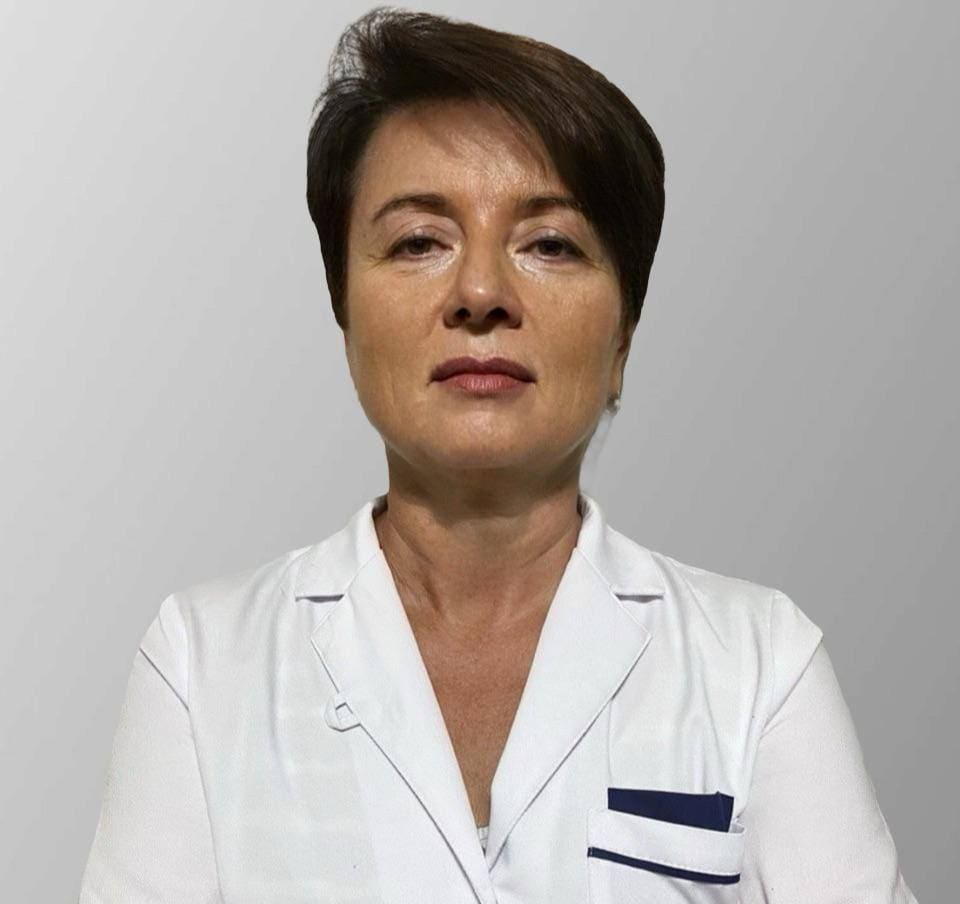
ROTAZAR
Ask a doctor about a prescription for ROTAZAR

How to use ROTAZAR
INSTRUCTIONS for medical use of the medicinal product ZOVIRAX DUO
Composition:
active substances: acyclovir, hydrocortisone;
1 g of cream contains acyclovir 50 mg, hydrocortisone 10 mg;
excipients: propylene glycol; white soft paraffin; mineral oil; cetearyl alcohol; isopropyl myristate; poloxamer; sodium lauryl sulfate; citric acid monohydrate; sodium hydroxide; hydrochloric acid concentrated; purified water.
Pharmaceutical form.
Cream.
Main physical and chemical properties:
a homogeneous cream of white color in an aluminum tube.
Pharmacotherapeutic group.
Preparations for the treatment of skin diseases. Antibiotics and chemotherapeutic agents for the treatment of skin diseases. Chemotherapeutic agents for local treatment. Antiviral preparations. Acyclovir in combination with other preparations. ATC code D06B B53.
Pharmacological properties.
Pharmacodynamics.
Acyclovir is an antiviral preparation that has high activity in vitro against herpes simplex virus type I and II. The toxic effect on the host organism cells is minimal. When entering cells infected with the herpes virus, acyclovir is phosphorylated to form an active compound - acyclovir triphosphate. The first stage of this process depends on the presence of virus-coded thymidine kinase. Acyclovir triphosphate acts as an inhibitor and substrate for viral DNA polymerase, preventing further synthesis of viral DNA, without affecting normal cellular processes.
Hydrocortisone is a weak corticosteroid that exhibits a range of immunomodulatory effects. When applied locally, its main role is to control various inflammatory skin lesions.
The cream with acyclovir and hydrocortisone, which combines the antiviral action of acyclovir and the anti-inflammatory action of hydrocortisone, reduces the progression of herpes episodes on the lips to the stage of forming vesicular lesions.
The exact mechanism of this is not well studied, but it is believed to be mediated by the clearance of the virus and a reduction in local inflammatory reactions on the lips, leading to a reduction in signs and symptoms of recurrent herpes.
Pharmacokinetics.
No clinical studies of pharmacokinetics have been conducted for the cream with acyclovir and hydrocortisone.
Clinical characteristics.
Indications.
Treatment of early signs and symptoms of recurrent labial herpes (herpes on the lips) to reduce the progression of episodes of herpetic vesicles to the stage of forming ulcers in immunocompetent adults and children over 12 years old.
Contraindications.
Hypersensitivity to acyclovir, valacyclovir, propylene glycol, or other components of the cream.
Use for the treatment of skin lesions caused by any virus other than herpes, or for the treatment of fungal, bacterial, or parasitic skin infections.
Interaction with other medicinal products and other types of interactions.
No interactions have been found.
Special instructions.
The cream should be used only for the treatment of herpes on the lips and face. It is not recommended to apply the cream to the mucous membranes of the oral cavity, eyes, and use it for the treatment of genital herpes. Accidental getting of the cream into the eyes should be avoided.
Patients with particularly severe and recurrent manifestations of Herpes labialis require a doctor's consultation. Patients with herpes should be warned about the contact transmission of the virus to other people, especially when there are open lesions (it is necessary to wash hands before and after using the cream). It is not recommended to use the cream in people with immunodeficiency due to the possibility of pseudo-opportunistic infections or resistant strains that require systemic antiviral therapy. Such patients require a doctor's consultation regarding the treatment of any infection.
The cream should not be used with occlusive dressings, such as patches or special films/plasters.
Prolonged continuous use should be avoided. Treatment lasts for 5 days and no longer. Treatment of patients with concomitant dermatitis of another origin has not been studied.
The preparation contains cetearyl alcohol, which can cause local skin reactions (e.g., contact dermatitis), and propylene glycol, which can cause skin irritation.
Contains sodium lauryl sulfate, which can cause local skin reactions (e.g., a feeling of tingling or burning) or enhance skin reactions caused by the application of other preparations on the same area.
When using systemic and topical corticosteroids, vision disorders may occur. If a patient has symptoms such as blurred vision or other vision disorders, the patient should be referred to an ophthalmologist to assess possible causes, which may include cataracts, glaucoma, or rare diseases, such as central serous chorioretinopathy, which have been observed after the use of systemic and topical corticosteroids.
Use during pregnancy or breastfeeding.
Pregnant women and breastfeeding women are recommended to use the preparation only when the benefit, in the doctor's opinion, outweighs the risk. The systemic effect of acyclovir and hydrocortisone when applied locally is very low.
During the use of the preparation in pregnant women, no increase in the number of fetal malformations was found. Clinical data on hydrocortisone do not indicate an increased risk of teratogenicity when used. In animal studies, cases of embryofetal toxicity were observed when used in low doses. Acyclovir and hydrocortisone penetrate into breast milk after systemic use, but the dose that penetrates into breast milk is not clinically significant. However, the preparation should not be used during breastfeeding without extreme necessity.
Ability to affect the reaction rate when driving vehicles or working with other mechanisms.
Zovirax Duo has no or negligible effect on the reaction rate when driving vehicles or working with other mechanisms.
Method of application and doses.
The preparation is intended for external use.
Adults and children over 12 years old should apply the cream 5 times a day, approximately at 4-hour intervals, except at night. Treatment should be started as early as possible, preferably immediately after the appearance of the first signs or symptoms.
Each time, a sufficient amount of cream should be applied to cover the affected area, including the outer edge of the lesion, if present.
Treatment lasts for 5 days and no longer. Hands should be washed before and after using the cream, and excessive rubbing or touching the affected areas with a towel should be avoided to prevent exacerbation or transmission of the infection.
Children.
There is insufficient data on the safety of the preparation in children under 12 years old, so it is recommended to use it in children over 12 years old.
Overdose.
No adverse effects were found when the entire tube of cream was used orally or locally due to the minimal systemic effect. In case of suspected overdose, medical help should be sought.
Adverse reactions.
From the skin and subcutaneous tissue:
Common (≥ 1/100, <1/10): dryness and flaking of the skin.
Uncommon (≥ 1/1000, <1/100): transient acute or burning pain, tingling (after application of the preparation), itching.
Rare (≥ 1/10000, <1/1000): erythema, changes in pigmentation. During skin safety studies, contact dermatitis was observed after application of the cream under a dressing. The reactive substance in the patch tests was hydrocortisone or a component of the cream base. Reactions at the site of application, including signs and symptoms of inflammation, were observed.
From the immune system:
Very rare (<1/1000): reactions of immediate increased sensitivity, including angioedema.
From the organs of vision:
Unknown: blurred vision.
During the patch tests, these cases were more often associated with the components of the cream base, rather than with acyclovir. There are isolated reports of reactions of immediate hypersensitivity, including angioedema, due to the local application of acyclovir.
Shelf life.
2 years.
Storage conditions.
Store at a temperature below 25°C in a place inaccessible to children. Do not freeze.
Packaging.
2 g of cream in a tube. 1 tube in a cardboard box.
Release category.
Without a prescription.
Manufacturer.
1. Glaxo Operations UK Ltd, United Kingdom
(manufacture of the medicinal product, primary and secondary packaging, quality control, batch release)
2. Haleon CH S.a.r.l., Switzerland
(primary and secondary packaging, quality control, batch release)
Location of the manufacturer and address of the place of its activity.
1. Harmire Road, Barnard Castle, DL12 8DT, United Kingdom
2. Route de l’Etraz 2, Nyon, 1260, Switzerland
- Country of registration
- Active substance
- Prescription requiredYes
- Manufacturer
- This information is for reference only and does not constitute medical advice. Always consult a licensed doctor before taking any medication. Oladoctor is not responsible for medical decisions based on this content.
- Alternatives to ROTAZARDosage form: tablets, tablets 300mgActive substance: irbesartanManufacturer: АТ "КИЇВСЬКИЙ ВІТАМІННИЙ ЗАВОДPrescription requiredDosage form: tablets, 150 mgActive substance: irbesartanManufacturer: Гетеро Лабз ЛімітедPrescription requiredDosage form: tablets, 300 mgActive substance: irbesartanManufacturer: Гетеро Лабз ЛімітедPrescription required
Alternatives to ROTAZAR in other countries
The best alternatives with the same active ingredient and therapeutic effect.
Alternative to ROTAZAR in Spain
Alternative to ROTAZAR in Poland
Online doctors for ROTAZAR
Discuss dosage, side effects, interactions, contraindications, and prescription renewal for ROTAZAR – subject to medical assessment and local rules.









